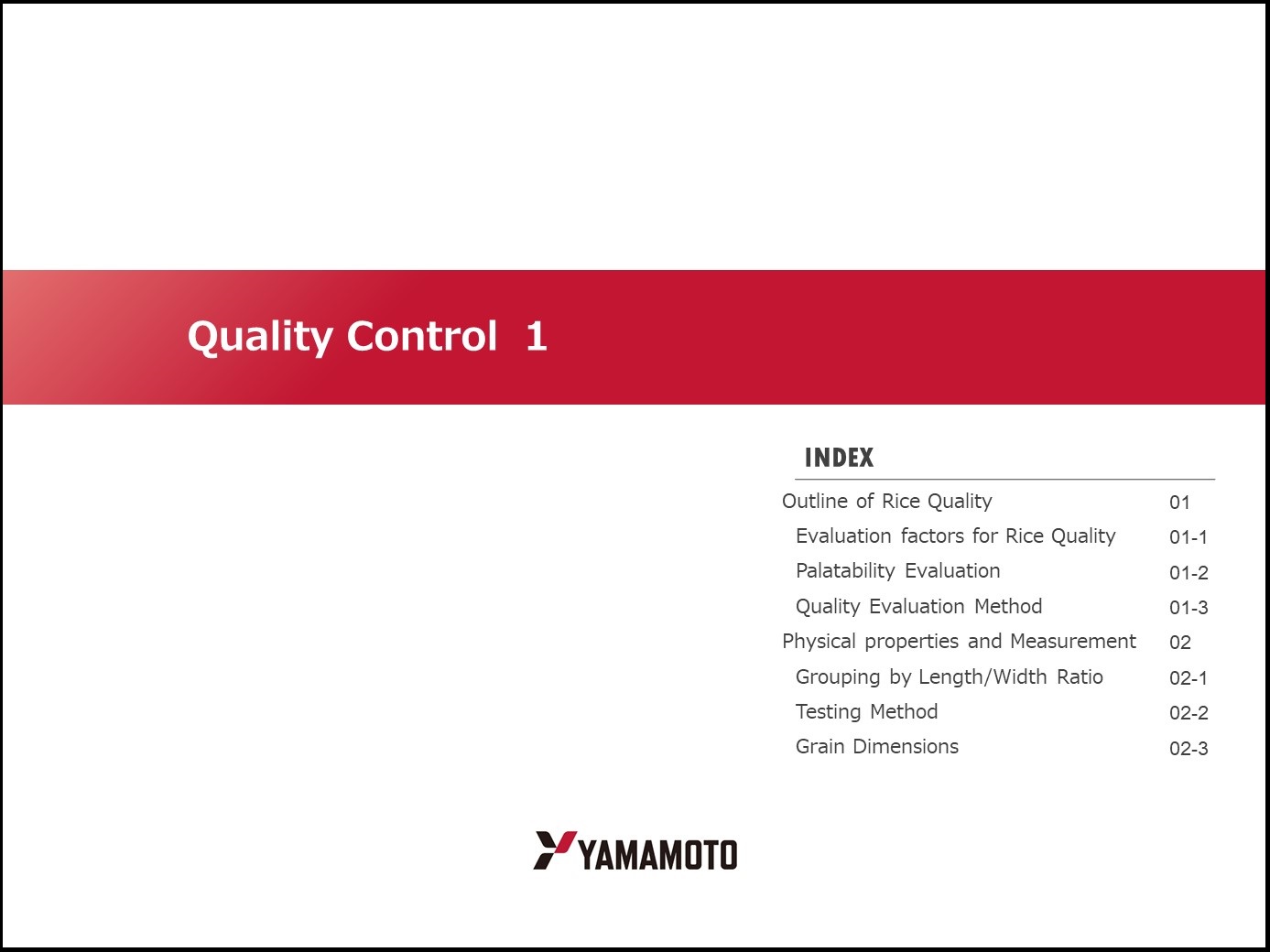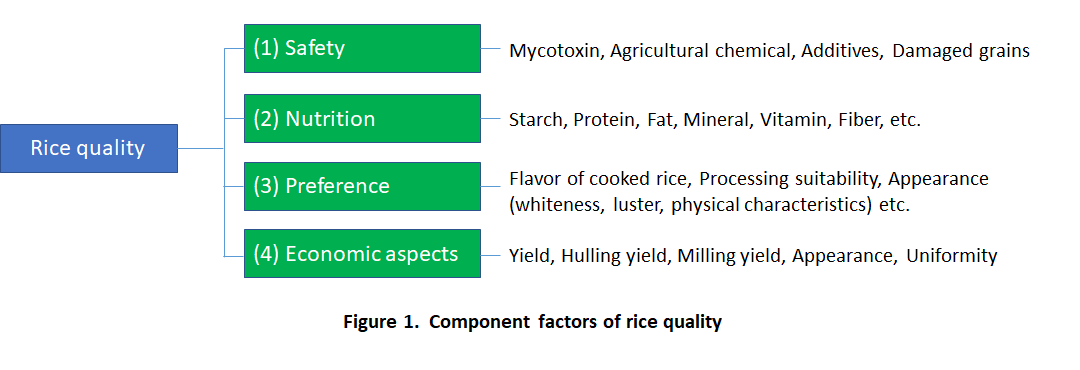55. Quality Control 1
- INDEX -
Outline of Rice Quality
Evaluation factors for Rice Quality
Palatability Evaluation
Quality Evaluation Method
Physical properties and Measurement
Grouping by Length/Width Ratio
Testing Method
Grain Dimensions
Outline of Rice Quality
Evaluation factors for Rice Quality
Precisely what factors are important vary slightly when evaluating rice quality depending on the era. It is, however, inevitable that, as rice is a staple food, there should be no harmful components, such as mycotoxin, present and that residues of agricultural chemicals or post-harvest processing chemicals should be either zero or at least less than an approved limit. It is naturally desirable that there is no or only a minimum amount of damaged grains and discolored grains present. It is also desirable that rice is a highly nutritious source of starch, protein, fat, inorganic substances and vitamins. From the standpoint of producing farmers, rice is a source of income and is traded as a commercial product, therefore, economic factors are also quite important. It is desirable that rice offers high production volume, high milling yield and has a good appearance and low deterioration during storage, both of which are highly valued in rice quality inspection. The processing characteristics of rice are also important. In the case of brown rice, processing qualities (secondary qualities), namely, (1) milling yield, (2) palatability and (3) storage characteristics are important, in addition to its primary qualities (those factors used in quality and testing standards in a narrow sense) such as moisture content, test weight, head rice yield and characteristics (fullness, uniformity, luster, white belly grains, etc.).
In the case of a milled rice, (1) appearance, (2) palatability, (3) broken grains, and (4) foreign matter have been commonly used as a quick index for the distribution and consumptions process of rice.
Recently, demands from consumers (individual preferences and processing suitability) such as for the flavor of cooked rice, texture and taste of rice when used in processed foods, are becoming more and more important, and are beginning to dictate the price of rice. The quality of rice can be summarized in the following illustration of Fig.1.

